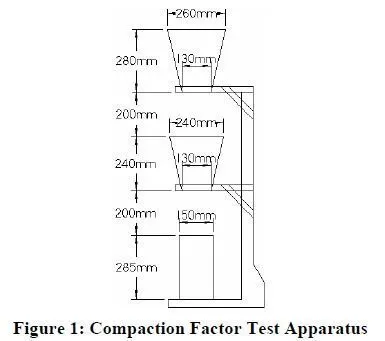The simplest and most widely used test method for self-compacting concrete is the slump flow test (Kuroiwa et al. 1993; EFNARC 2002; Bartos, Sonebi, and Tamimi 2002). The test, which was developed in Japan, was originally used to measure underwater concrete and has also been used to measure highly flowable concretes.
To perform the test, a conventional slump cone is placed on a rigid, non-absorbent plate and filled with concrete without tamping. The plate must be placed on a firm, level surface. The slump cone is lifted and the horizontal spread of the concrete is measured. For an additional measure of flowability, the time required for the concrete to spread to a diameter of 50 cm can be measured. This value of T50 generally ranges from 2-7 seconds.
It is possible to assess the stability of concrete qualitatively after performing the slump flow test. A visual stability index (VSI) has been developed as a standard means of determining stability. A numerical score on a scale of 0 to 3 is assigned based on a visual evaluation of the segregation and bleeding in the concrete sample. Self-compacting concrete should exhibit a rating of 0 or 1 to be considered acceptable
